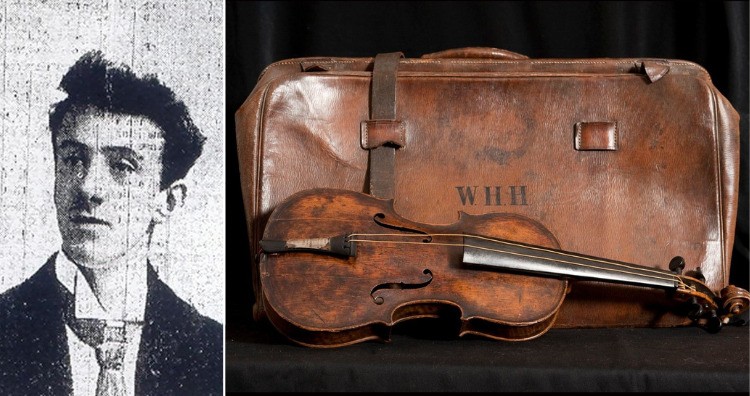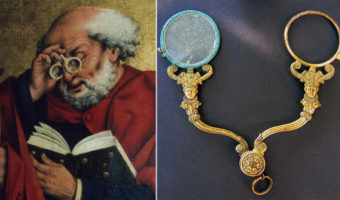10 Lost Artifacts that Were Rediscovered

Over the years, many cultural and archeological artifacts have been lost. Some of these were stolen from museums, while others were simply forgotten or misplaced on account of human error. But fortunately, we have also rediscovered many such relics, either by accident or through sheer effort. Their rediscovery gives us a second chance to truly appreciate their worth. So, with that in mind, let’s take a look at ten lost artifacts that were rediscovered.
1 During the final moments of the RMS Titanic’s sinking, bandmaster Wallace Hartley reportedly played his violin to calm the passengers. However, this violin was thought lost until it was rediscovered in 2006 in the attic of a British home. In 2013, the instrument was auctioned off for about $1.6 million.
James Cameron’s movie Titanic (1997) shows a band of musicians playing “Nearer, My God, to Thee” as the majestic ship sinks. This cinematic moment was inspired by real-life accounts of Wallace Hartley’s band playing music to calm the ship’s passengers.
The vessel then went down into the icy North Atlantic Ocean and took Hartley and his violin along with it. Later, when Hartley’s body was pulled out of the water, his violin was found still strapped to his back. However, this instrument then vanished from history.
After its initial discovery, the violin had been handed over to Hartley’s fiancée, Maria Robinson. From there, the instrument likely passed through multiple hands before arriving in the attic where it was found in 2006. Experts then tested seawater deposits on it to authenticate it. The violin also had an engraved silver plate that connected it to Hartley.
In 2013, an anonymous buyer bought this “sea-corroded” violin and its leather case for a whopping $1.6 million. (1, 2)
2 In 2009, Gergely Barki spotted a lost artifact, a famous painting, in the background of the movie Stuart Little (1999). This painting, by the Hungarian artist Róbert Berény, is called Sleeping Lady with Black Vase. It later sold for about $285,700 at an auction.
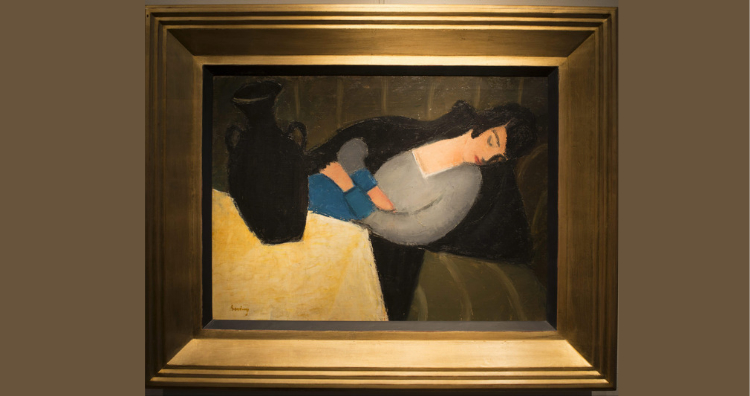
Róbert Berény’s exquisite Sleeping Lady with Black Vase is a Hungarian avant-garde painting from the 1920s. In 1928, a buyer, who may have been Jewish, purchased it from an exhibition. Then, when World War II broke out, the painting and its owner probably left Hungary, after which the artwork disappeared.

But in 2009, a sharp-eyed art historian, Gergely Barki, spotted the artwork while watching the movie Stuart Little (1999). The painting had been used as a background prop in a scene in the movie.
Barki immediately sent numerous emails to the movie’s producers, hoping to track down the painting. Finally, two years later, he received word from a former set designer who said she had the artwork.
In 2014, more than nine decades after its disappearance, the painting was returned home to Hungary. It then went up on auction and sold for about €229,500 ($285,700). (1, 2)
3 The Mask of Warka is one of the oldest depictions of a human face. During the US-led invasion of Iraq in 2003, this mask disappeared from the National Museum of Iraq. Authorities then rediscovered the lost mask from a farm in Baghdad.
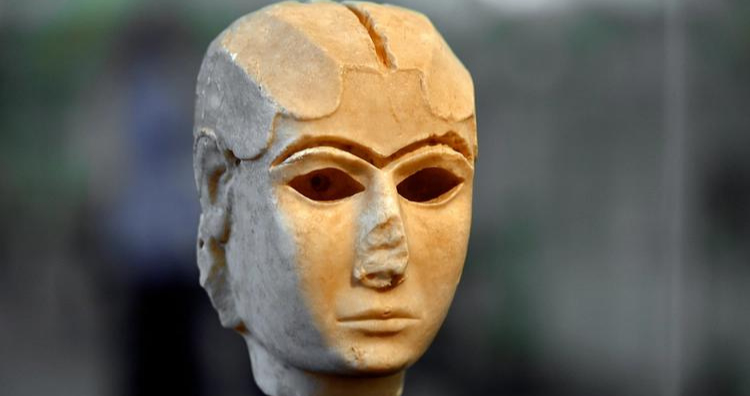
The Mask of Warka, dating to about 3200 to 3000 BCE, is the earliest known depiction of a human face. This 20-centimeters (8 inches) tall mask made from marble, likely represents the Sumerian goddess Inanna.
Since its discovery in the 1930s, the mask has remained on display at the National Museum of Iraq. But shortly before the US invaded Iraq in 2003, the museum took the mask off display and put it in storage for safekeeping. Then, sometime in April of 2003, the mask and a few other artifacts disappeared from the museum, and the US military and the Iraqi police soon teamed up to recover them.
Later, when they received a tip regarding the whereabouts of the mask, they decided to follow it. This then led the authorities to a farm on the outskirts of Baghdad. There, buried under heaps of dirt, they found the magnificent Mask of Warka, also known as the Lady of Warka.
Now, the mask is back on display at the National Museum of Iraq in Baghdad. (1, 2, 3)
4 A priceless Roman mosaic spent nearly 50 years as a coffee table in New York City before its rediscovery. This mosaic belonged to the Roman Emperor Caligula and was thought to have been destroyed by the Nazis. It was then returned to Nemi, Italy, where it was put on display.
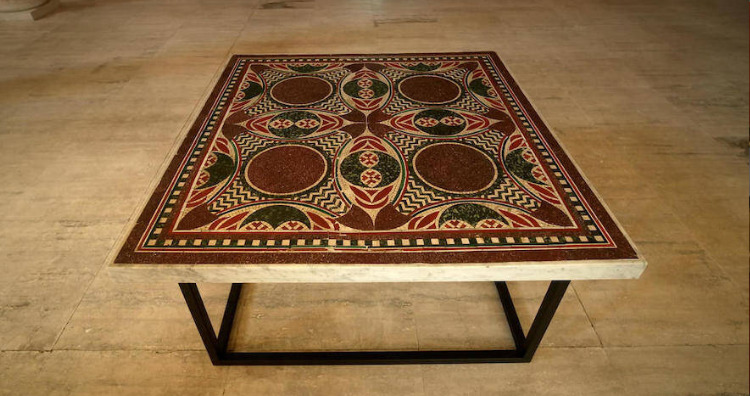
Of all things one might expect to see as a coffee table, an ancient artifact is likely to be last on the list. This is perhaps why Helen Fioratti, an art dealer and gallery owner, did not realize that her beloved coffee table was actually a priceless Roman mosaic.
Fioratti and her husband had purchased the mosaic in the 1960s from an Italian noble family. Then, when it arrived at their New York City home, they decided to turn it into a beautiful coffee table. More than 40 years after this, Fioratti learned that her “coffee table” was actually a Roman artifact that belonged to Emperor Caligula.
During World War II, this mosaic was thought to have been destroyed when the Nazis burned down the museum where it had been stored. But now, it has returned home to Nemi, Italy, where it was put on display at the Museum of the Roman Ships. (1, 2)
5 During the Civil War, a Union soldier stole North Carolina’s copy of the Bill of Rights. It then remained missing for more than a century before an FBI sting operation recovered it. Now, the document is stored in the state’s archives.
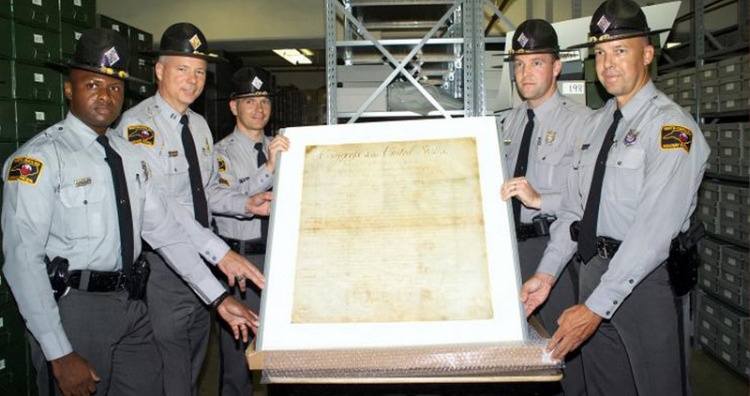
The Civil War-era is an unforgettable moment in American history. But for the state of North Carolina, it is also the period when their copy of the Bill of Rights disappeared.
In April 1865, a Union soldier stole the document from the North Carolina Statehouse and returned to Ohio with it. After that, the whereabouts of the precious document became a puzzling mystery that proved difficult to solve.
But in March 2003, it was recovered from two antique collectors who were trying to sell it. This was part of an FBI sting operation, and an agent posing as a philanthropist successfully recovered the stolen document.
However, it still did not make its way to North Carolina until 2008. This was because, soon after the document’s recovery, the state found itself embroiled in a legal dispute over its ownership rights. Finally, a Wake County Superior Court declared it the exclusive property of the state where it still remains. (1, 2)














